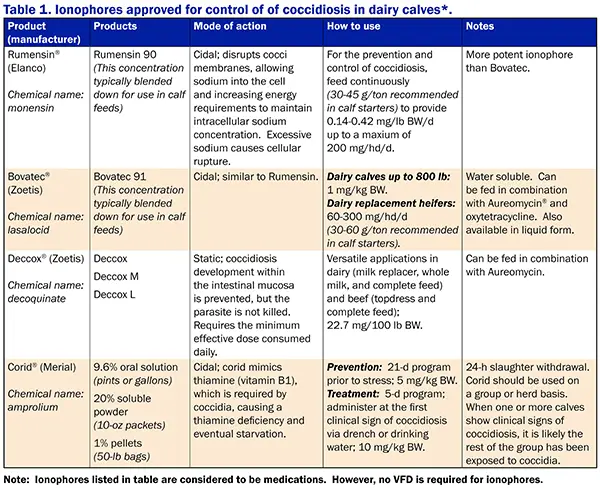
Fast Fact: What Are the Risk Factors for Coccidiosis in My Calves? – Dr. Noah Litherland, Vita Plus
Quick answer: The key risk factors for coccidiosis are incomplete protection from a coccidiostat and high-level exposure to the parasite.
A bit more: Coccidia are parasitic protozoans that infect both the small and large intestines. The calf ingests oocytes from the environment, the coccidia invade the lining of the small and large intestines, and they reproduce by hatching oocytes into the environment to infect other hosts. Acute inflammation of the large intestine occurs as they burrow into the intestinal cells. This inflammation decreases the ability of the large intestine to do its primary job of absorbing water from intestinal contents. Inadequate water absorption results in loss of stool firmness. In addition, recent research in poultry suggests coccidia are capable of producing immune signals that decrease local immune activity in the intestinal cells, allowing them to colonize with decreased pressure from the host’s immune system.
In the majority of cases, coccidia are species-specific. Symptoms are generally caused by the species Eimeria zuernii and Eimeria bovis, and include loss of appetite, fatigue, dehydration, and watery, sometimes bloody, scours. Even subclinical coccidiosis impacts growth and feed efficiency of youngstock. Additionally, coccidiosis can open the door for additional pathogens, resulting in secondary and more damaging disease, such as respiratory disease.
Suggested youngstock coccidia control protocol
- Maintain clean and dry maternity, nursery, and transition pens.
- Feed a coccidiostat in both liquid and solid feed.
- Transition calves should consume an adequate amount of starter to maintain coccidiostat intake, energy balance and immune function.
- If the farm has a history of coccidia, consider using Corid® pellets or a Corid water additive a few days before and after calves transition to new facilities.
- Oral dosing of Corid may be necessary during clinical coccidiosis as calves may not be consuming adequate amounts of grain or water to achieve effective levels of the coccidiostat.
Key risk factors for coccidiosis
- Incomplete protection from a coccidiostat (Table 1 describes common coccidiostats and their applications) due to discontinued use of the coccidiostat or insufficient grain or milk intake to provide protection.
- High-level exposure from:
- Wet conditions (coccidia thrive in a wet environment)
- Grooming (calves can ingest coccidia during self-grooming or when grooming penmates)
- Excessive stocking density (target a minimum of 35 square feet of space per calf)
- Concurrent Giardia infection
- Commingling calves of a broad range of age (practice all-in-all-out management procedures)
- Commingling calves from multiple sources
- Contaminated feed or water

To prevent contamination of feed and water, design calf grain feeding and watering systems to prevent calves from dunging or putting their feet in the feed (Image 1). Animals will inevitably foul their feed and water, so develop and implement cleaning and sanitation protocols.

| Category: |
Starting Strong - Calf Care |

